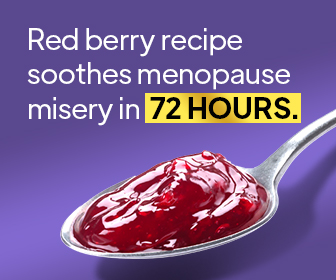“How much protein a day do I need?” Often, it’s because we’re trying to lose weight or trying out vegetarian or vegan options that this important question pops into our mind. But sometimes, it’s because of a food allergy or a challenging chronic illness. Or, maybe we just want to exercise our options. We are constantly trying to improve our lives and our health by learning more about the food we eat, and understanding the amount of protein we need is one way to do that.
So, is there an optimal amount? How much protein is too much, if there is such a thing? If so, what is it? And are there better proteins than others? We are going to help you answer those questions and many others. We have done scientific research to help take the guesswork out of these questions, so you can enjoy your diet, make adjustments, and live a healthier life.
What is Protein?

Protein is one of the building blocks of our bodies and is required for us to function normally.[1] It is in our muscle, bone, skin, hair, and every body part and tissue.[2] Furthermore, it is responsible for the structure, function, and makeup of our bodies’ tissues and organs.[3] Protein is made up of long chains of amino acids linked together.[4] There are 20 different kinds of amino acids that combine to create a protein.[5] While most of these amino acids are produced by our bodies, there are 9 essential amino acids that our bodies cannot produce. As a result, we must get these through eating the right foods.
Proteins have several functions within our bodies, besides just being part of our actual physical makeup:
- Antibodies: protect the body from antigens
- Enzymes: manage chemical reactions
- Messengers: coordinate biological processes between cells, tissues, and organs
- Structural component:provide structure and support for cell and help the body to move
- Transport and Storage: carry atoms and cells throughout the body[6]
The difference between complete and incomplete proteins
Our body requires nine essential amino acids that we cannot produce ourselves. A complete protein (such as meat) contains all nine of these essential amino acids.[8] Conversely, incomplete proteins are low or lacking in one or more of these essential amino acids. Plant foods are generally considered to have incomplete proteins.[9] However, there are certain exceptions to the rule, such as soy and quinoa.
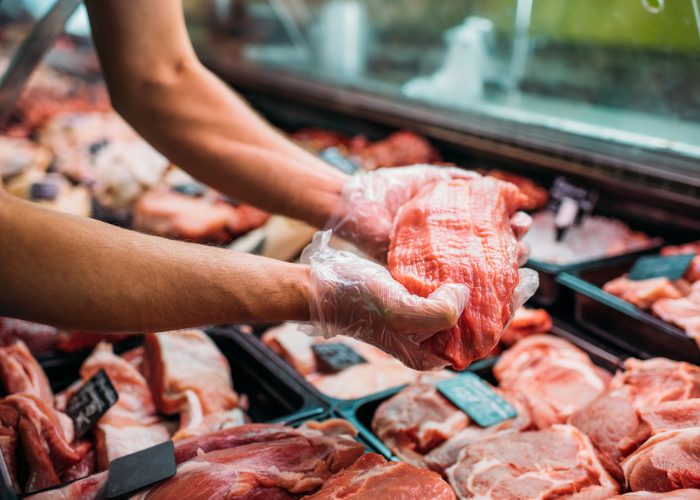
List of foods with complete proteins
- Meat
- Poultry
- Fish
- Eggs
- Milk
- Cheese
- Yogurt
- Soybeans
- Quinoa
If red meat is your primary source of protein, be very careful. Although red meat is considered a complete protein, it can also contain saturated fats and sodium which are considered to be unhealthy. It is proven that regularly eating red meat causes cancer, diabetes, heart disease, and osteoporosis.[10] The World Health Organization has even criticized red meat cooked at high temperatures for being carcinogenic.[11]
So, how else can you get complete proteins? Well, you can combine different incomplete proteins to make up the essential amino acids you need. By eating different plant-based foods, you can still meet your daily intake of essential nutrients.
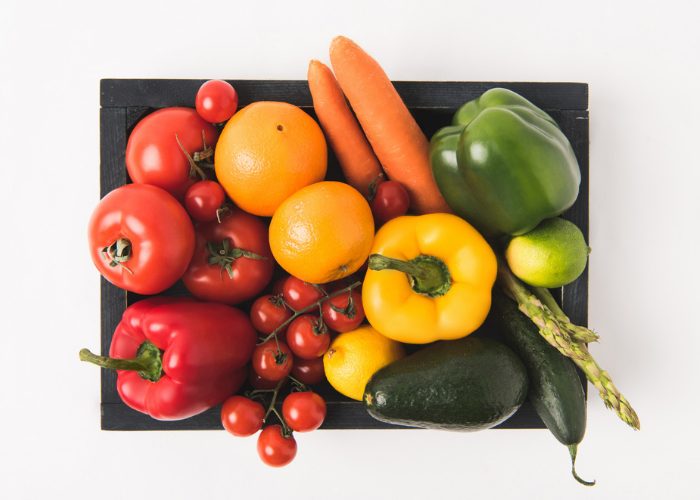
List of foods with incomplete proteins
- Nuts
- Grains
- Fruits
- Vegetables
- Seeds
- Wheat
- Legumes
How to combine incomplete proteins
1. Combine legumes + grains
- Vegetarian chili + rice
- Hummus + pita bread
- Barley + lentil soup
- Chickpea curry + rice
2. Combine soy + any vegetable
- Tofu + vegetable bowl
- Edamame + snow pea stir-fry
- Soya bean + vegetable curry
3. Combine any fruit or vegetable + quinoa
- Chia + blueberries + bananas + quinoa breakfast bowl
- Sweet potatoes + quinoa salad
- Shiitake + snow peas + quinoa stir-fry
- Roasted eggplant + apple + quinoa salad
Am I Getting Enough?
Protein is absolutely necessary for our bodies, brains and overall health. But how do you make sure you are getting enough? And what happens if you don’t consume enough of them?
A lack of them can cause serious havoc in your body. A deficiency can cause loss of muscle mass, decreased immunity, weakening of the heart and respiratory system, and even death.[12] Here are some signs you are not getting enough:
1. You are getting sick more often
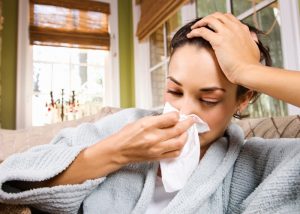
If you’ve found that it takes you longer to recover from common illnesses such as a cold, you might have a protein deficiency. The amino acids from proteins help form your immunity against diseases, and a deficiency actually suppresses your immune system. This decreased immunity can cause illness, metabolic stress, and inability to heal quickly.[13]
2. You’ve been feeling more tired

Have you been feeling more tired lately? Or perhaps your mind is constantly foggy? A deficiency can cause both fatigue and brain fog.[14] Amino acids (such as glutamine) are used alongside glucose in the muscle for fuel. They are also needed for cognitive function and memory. Having a deficiency means you’ll lack the amino acids to fuel your muscles and your brain.
3. Feeling low and overwhelmed

A lack of protein can leave you feeling low, and even depressed. Amino acids are required to produce two neurotransmitters in your brain that affect mood levels: dopamine and serotonin.[15] The lack of these two amino acids means the synthesis of these neurotransmitters won’t occur, and commonly results in low mood and aggression.
4. Shrinking of muscles

When we don’t eat enough calories, it forces our body to look for energy sources elsewhere. Often, your body breaks down muscle tissues for energy.[16] A breakdown of muscles leads to a decrease in metabolic rate, meaning we have to eat even less and work even harder to maintain or lose weight. This also happens if we don’t get sufficient protein for our activity level, age, or size. It is the reason why elderly people become frail. The loss of muscle mass is an important reason to ensure that you are eating a sufficient amount of them.
5. Low blood pressure and heart rate

Symptoms such as feeling faint, shortness of breath, or chest pain, could be serious signs of a protein deficiency. Low protein levels can cause low blood pressure, which can lead to brain malfunctions and fainting. Low blood pressure occasionally causes shortness of breath or chest pain due to an inadequate blood supply to the heart muscle (a condition called angina).[17] If you experience any of these symptoms, get help from a medical professional immediately.
How Much Protein Do I Need a Day, & How Much Protein is Too Much?
We know the importance of having protein in our diets, but we also understand the risks of having too much. So, how much protein do you need a day, and when is the amount considered too much? Here are some research-based facts about the recommended daily intake.
Women should eat 46 grams of protein per day

The Institute of Medicine of the National Academies declares that the daily recommended protein intake for an adult is 0.8 grams per kilogram of body weight.[30] Or, in terms of pounds, it is 8 grams of protein for every 20 pounds of weight.[31] In the United States, the daily recommended intake for women is 46 grams.
But this figure fluctuates given various factors. As the U.S. Department of Agriculture points out, the amount of protein each individual needs depends on their age, sex, and level of physical activity.[32] These additional factors are vitally important to determining the best daily balance of proteins that you should be consuming. Body size, physical activity level, age, total calorie intake, and your overall health are all also important. You’ll need additional protein if you fit into these categories:
- Older than age 35
- Bodybuilder
- Lead a sedentary lifestyle
- Large bones or larger in mass
They should make up 10-35% of your daily diet
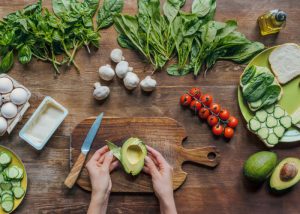
But there is one more factor to consider when figuring out your ideal recommended daily intake: 46 grams of protein should constitute between 10-35% of our daily diet. This is a very broad range to follow. But it is not difficult if you plan your meals to be balanced between protein, fiber (fruits, vegetables, and grains), fats and carbohydrates.
If you are on a restrictive diet to lose weight or to manage a chronic illness, this is one very important factor to help you remain balanced in your daily recommended amount.
For example, if you are on a high-protein, carb-restricted diet, then your ideal recommended daily intake should be 46 grams, but it should be 35% of your daily intake.[33] However, if you are on a restrictive diet because you have celiac disease, then you should probably be eating 46 grams of protein, but it should comprise only 10-15% of your diet. But remember that these are issues that you should always discuss with your healthcare professional.
What Happens if You Eat Too Much Protein?
If you’re wondering what happens if you eat too much protein, here’s the scoop. Eating too much protein is inadvisable as it can cause colorectal cancer, heart disease, kidney problems, and osteoporosis.[18] Indulging in too much of it, even when following a low-carb high-protein diet, can easily increase your fat stores and risk nutrient deficiencies.
A secondary problem exists when we eat too much protein. Doing so excludes other vital nutrients, fiber, heart-healthy fats, and complex carbohydrates. As we eat too much of one thing, we end up excluding other things. A well-balanced diet at every meal contributes to improving overall health and lowering your chances of developing diseases.
1. Constipation

Protein itself is not the cause of constipation. Rather, it’s the lack of fiber. In other words, the lack of balance in meals makes it difficult for our bodies to process a high-protein diet over a long period. Try eating yogurt to replace one serving of protein, or including active probiotics in the form of sauerkraut, kimchi or kombucha to help maintain balanced bowels. Or increase your plant-based proteins to include fiber-filled beans and grains together to stay balanced.
2. Dehydration

Even if you do not notice or feel thirsty, you may still be dehydrated. Excess protein causes dehydration because of the excess of amino acids.[19] Amino acids carry more nitrogen through the blood and, consequentially, through the kidneys. The excess nitrogen moves into the kidneys, which need extra water to process it. Without sufficient water, the kidneys produce concentrated urine, and this is a sign of dehydration![20] Constantly stay hydrated and drink more water, even if you don’t feel thirsty.
3. Bad breath

Eating too much protein can result in an unpleasant sensation known as “keto breath.” Keto breath is caused when dieting and our bodies break down fat cells to use for energy. This happens when we follow high-protein diets like the Keto diet plan.
When our bodies are unable to break down ketones fast enough, our bodies produce excess ammonia and it results in Keto breath. Drinking more water, reducing protein intake, and masking the odor with breath spray or mouthwash are three viable solutions to keto breath.
4. Weight gain
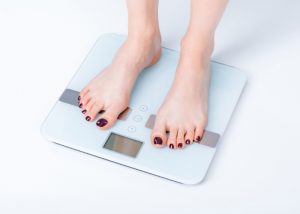
If you eat too much protein for extended periods of time, the surplus is retained in all of the body’s fat stores.[21] Since the body has no other choice than to store this surplus, it creates additional cells that become fat tissue.[22] Try not to exceed more than 2 grams of protein per kilo of body weight. This will help you remain on your diet plan. Remember that keeping a balanced plate is always your best option.
5. Kidney problems
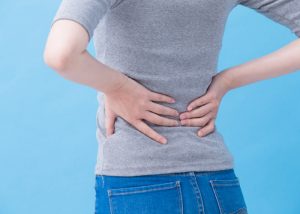
It can also cause waste to build up in your blood.[23] As your kidneys filter your blood, they may not be able to filter the extra waste. Protein overload in the blood can seep into the urine, which is an early sign of kidney disease called proteinuria.[24] The optimum amount you need is based on your body size, your kidney problem, and the amount of protein that may be in your urine.[25] A balanced intake can prevent the risk of proteinuria and kidney disease.
6. Increased cancer risk

Dietary protein has often been associated with cancers of the breast, endometrium, prostate, colorectum, pancreas, and kidney.[26] Cancer of the large intestine has been found as correlated to the consumption of eggs, followed by beef, sugar, beer, and pork.[27] And, in one study that compared colorectal cancer and consumption of legumes, starches, and meats, the association was strongest for beef.[28] Furthermore, once cancer cells are present, they are enhanced by increased protein intake.[29]
What Are Some High Protein Foods I Should Include In My Diet?
Scientists have uncovered that protein is in every type of food. Let’s take a very clear look at the different food groups and their protein content.
Meat and Dairy Products
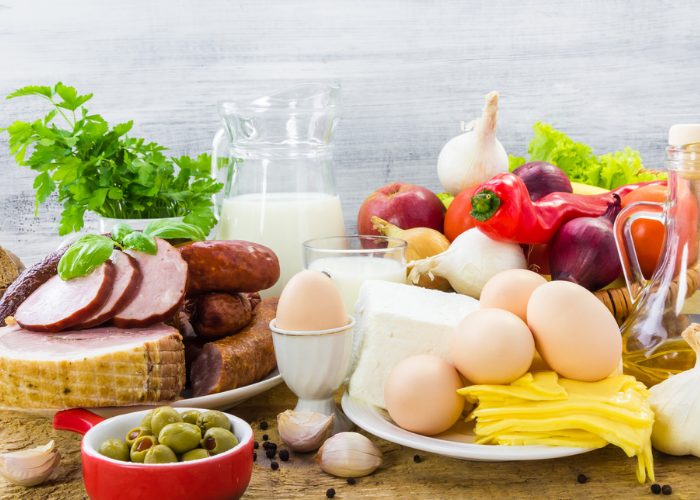
Animals and animal products are comprised of complete proteins, which contain all the amino acids our bodies need to function at its best. Here’s the amount of protein found in some animal and animal products:
- An order of steak at a restaurant (average 150g) – 36 grams
- A glass of milk (200ml) – 6 grams
- 2 slices of cheese (1.6 oz) – 10.5 grams
Legumes
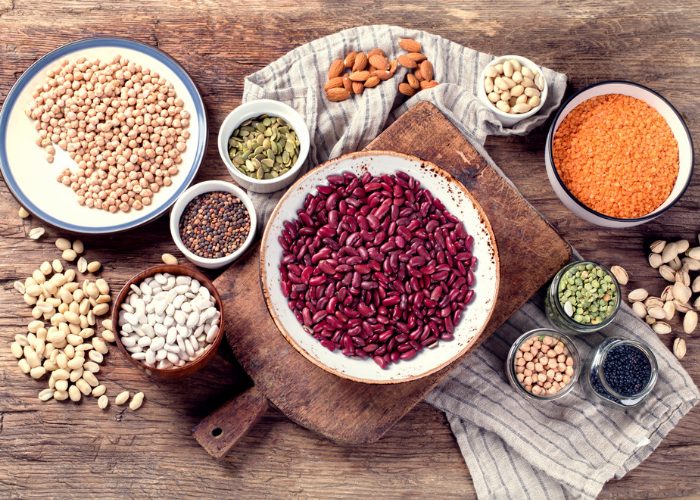
Legumes, which include beans, soy, and peanuts, are the most popular non-meat, non-dairy substitutes for proteins. Importantly, when legumes are eaten with grains, the combination offers a complete protein profile. Here are some common legumes and their protein content per cup/340 grams:
- Pinto beans – 71 grams
- Soybeans – 122 grams
- Lentils – 31 grams
- Chickpeas – 65 grams
Nuts and Seeds
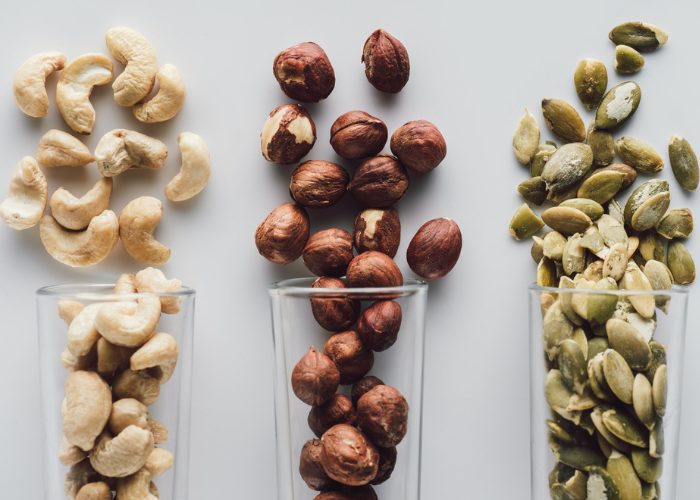
Apart from being packed with protein, nuts and seeds also contain lots of beneficial fats. These are polyunsaturated fats, specifically essential fatty acids omega-3 and omega-6. The fatty acids from nuts and seeds help the blood, joints, and all your other organs to function effectively. Nuts and seeds also help our digestion and assimilation of their proteins, as well as balance our digestive systems. Here’s the amount of protein found in some common nuts and seeds (per 100 grams):
- Almonds – 21 grams
- Cashews – 18 grams
- Pistachio nuts – 20 grams
- Hazelnuts – 15 grams
- Dried pumpkin seeds – 30 grams
- Chia seeds – 17 grams
- Sunflower seeds – 21 grams
- Sesame seeds – 18 grams
Grains
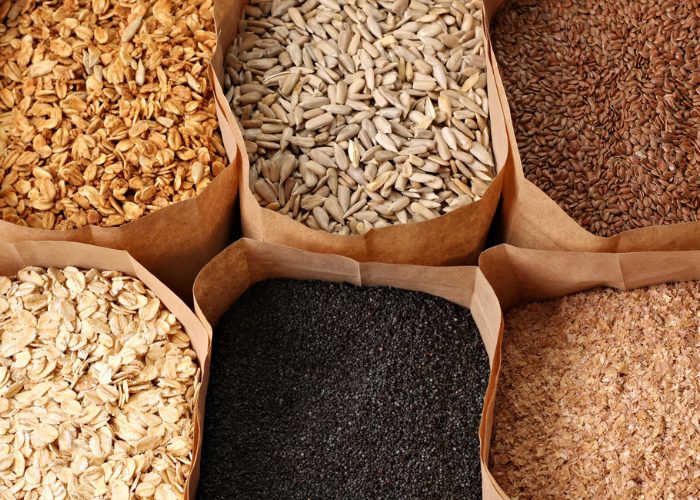
Grains have proteins, too! They are essentially seeds of the grain plant. These proteins combine carbohydrates, fiber, and other vital nutrients that help our bodies function well. In addition, grains have an abundance of nutrients and have been proved to lower the risk of chronic diseases. Here’s the protein content of some common grains (per cup/340 grams):
- Quinoa – 24 grams
- Oatmeal – 26.3 grams
- Amaranth – 28.1 grams
- Millet – 22 grams
- Wild Rice – 23.6 grams
Fun Fact: You can combine grains with legumes (incomplete proteins) to make a complete protein. Great news for anyone on a vegan diet and vegetarians!
Fruits and Vegetables
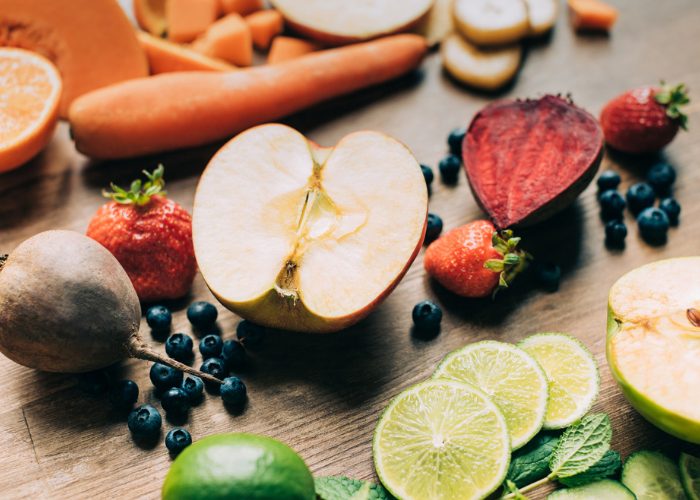
Believe it or not, many fruits and vegetables also contain protein. Generally speaking, each fruit or veggie usually contains around 1 gram of protein per piece. It isn’t much, but it all add ups! Below are some fruits and the amount of protein they contain (per 100 grams):
- Avocado – 2 grams
- Blackberries – 1.4 grams
- Apple – 0.3 grams
- Orange – 0.9 grams
- Broccoli – 2.8 grams
- Kale – 4.3 grams
Plan Your Meals with this High Protein Foods Chart
Essentially, try to balance your diet to include all of the food groups, while observing the quantity of proteins that you ingest every day. Having more information to help you balance your diet and live a healthier lifestyle is the most important thing you can do each day.
| Type of Food | Serving Size | Amount of Protein |
| Meat | 100 grams (3.5 oz.) | 25-27 grams |
| Milk | 100 grams (½ cup) | 3 grams |
| Cheese | 1 ounce | 7 grams |
| Legumes | 100 grams | 5 grams |
| Pinto beans | 100 grams | 21 grams |
| Soy (whole, boiled – edamame) | 100 grams | 17 grams |
| Lentils | 100 grams | 9 grams |
| Grains (cooked) | 1 cup | 6 grams |
| Fruits and Vegetables | 100 grams (approx. 1 piece) | 1 gram |
| Avocado, Kiwi, Apricots, Blackberries, and Oranges | 100 grams (approx. 1 piece) | 2 grams |
Tips on Getting the Ideal Amount
So, how can you better manage your intake? Here are some tips to help you get started:
- Plan your meals. Planning your meals beforehand will help you monitor your daily protein intake and make sure you’re not over-doing it.
- Take lifestyle factors into account. Remember to tailor your intake depending on lifestyle factors such as age and physical activity. Also, consult a health professional to determine the optimal amount of protein you need.
- Reduce protein intake if you are ill. If you’re in bed with the flu, reduce the amount of proteins you eat in balance with other foods as your body will struggle to digest it. If you have chronic illnesses, seek professional advice before altering your intake levels.
- Eat balanced meals. Each meal should have all 3 or 4 food groups: meat (or meat substitute), carbs, fiber (fruit or veggies), and fat. Look at the overall nutritional content of foods – not just protein – to ensure you’re getting a good balance between the proper amount of protein with fiber, carbs, and fats.
- Eat small meals. Eat three to four small meals throughout the day, and don’t skip meals! This helps the body digest proteins better and absorb and distribute nutrients evenly.[34] It helps you maintain a stable amount of proteins in our blood at all times for energy and synthesis.
- Mix and match proteins to get complete proteins. Meat and dairy products are complete proteins with all amino acids present, as are quinoa and soy. But you can mix various combinations of incomplete proteins to get all your essential amino acids too.
- Remember that protein is in everything. Remember that even fruit has it, so don’t forget to count it among your 46 grams per day.
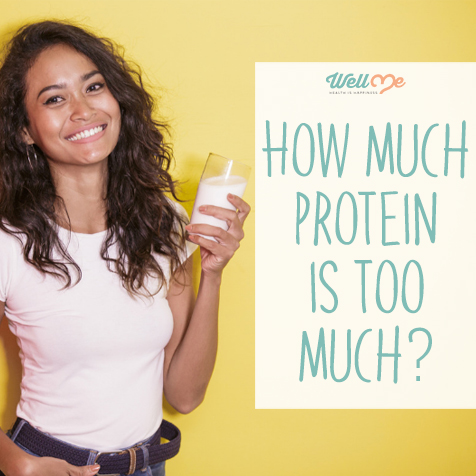
Conclusion
Learning what nutrients your body needs is vital to your good health. We need to work a little harder to make sure we get everything we need. But be sure you don’t overdo it and enjoy a healthy balance. Using this article as your guide will make that a little easier!
References
- [1] https://www.hsph.harvard.edu/nutritionsource/what-should-you-eat/protein/
- [2] https://www.hsph.harvard.edu/nutritionsource/what-should-you-eat/protein/
- [3] NIH. https://ghr.nlm.nih.gov/primer/howgeneswork/protein
- [4] https://www.hsph.harvard.edu/nutritionsource/what-should-you-eat/protein/
- [5] https://ghr.nlm.nih.gov/primer/howgeneswork/protein
- [6] NIH. https://ghr.nlm.nih.gov/primer/howgeneswork/protein
- [7] https://www.sciencedaily.com/releases/2011/09/110919073845.htm
- [8] https://www.hsph.harvard.edu/nutritionsource/what-should-you-eat/protein/
- [9] Harvard School of Public Health. https://www.hsph.harvard.edu/nutritionsource/what-should-you-eat/protein/
- [10] https://www.hsph.harvard.edu/nutritionsource/what-should-you-eat/protein/
- [11] https://www.cancer.org/latest-news/world-health-organization-says-processed-meat-causes-cancer.html
- [12] Harvard School of Public Health. https://www.hsph.harvard.edu/nutritionsource/what-should-you-eat/protein/
- [13] https://www.omicsonline.org/open-access/the-effect-of-nutritional-elements-on-the-immune-system-2165-7904.1000152.php?aid=10186
- [14] https://www.ncbi.nlm.nih.gov/books/NBK224629/
- [15] NCBI. https://www.ncbi.nlm.nih.gov/pmc/articles/PMC2738337/
- [16] https://www.kidney.org/atoz/content/nutrikidfail_stage1-4
- [17] https://www.msdmanuals.com/home/heart-and-blood-vessel-disorders/low-blood-pressure-and-shock/low-blood-pressure
- [18] Mayo Clinic. https://www.mayoclinic.org/healthy-lifestyle/nutrition-and-healthy-eating/expert-answers/high-protein-diets/faq-20058207
- [19] http://advance.uconn.edu/2002/020429/02042904.htm
- [20] http://advance.uconn.edu/2002/020429/02042904.htm
- [21] NCBI. https://www.ncbi.nlm.nih.gov/pmc/articles/PMC4022420/
- [22] https://www.ncbi.nlm.nih.gov/pmc/articles/PMC4022420/
- [23] https://www.kidney.org/atoz/content/nutrikidfail_stage1-4
- [24] NKF. https://www.kidney.org/atoz/content/proteinuriawyska
- [25] https://www.kidney.org/atoz/content/nutrikidfail_stage1-4
- [26] https://www.ncbi.nlm.nih.gov/books/NBK216648/
- [27] NCBI. https://www.ncbi.nlm.nih.gov/books/NBK216648/
- [28] https://www.ncbi.nlm.nih.gov/books/NBK216648/
- [29] https://www.ncbi.nlm.nih.gov/books/NBK216648/
- [30] Harvard School of Public Health. https://www.hsph.harvard.edu/nutritionsource/what-should-you-eat/protein/
- [31] https://www.hsph.harvard.edu/nutritionsource/what-should-you-eat/protein/
- [32] https://www.choosemyplate.gov/eathealthy/protein-foods
- [33] National Academies. http://www.nationalacademies.org/hmd/Reports/2002/Dietary-Reference-Intakes-for-Energy-Carbohydrate-Fiber-Fat-Fatty-Acids-Cholesterol-Protein-and-Amino-Acids.aspx
- [34] https://www.sciencedaily.com/releases/2011/09/110919073845.htm


